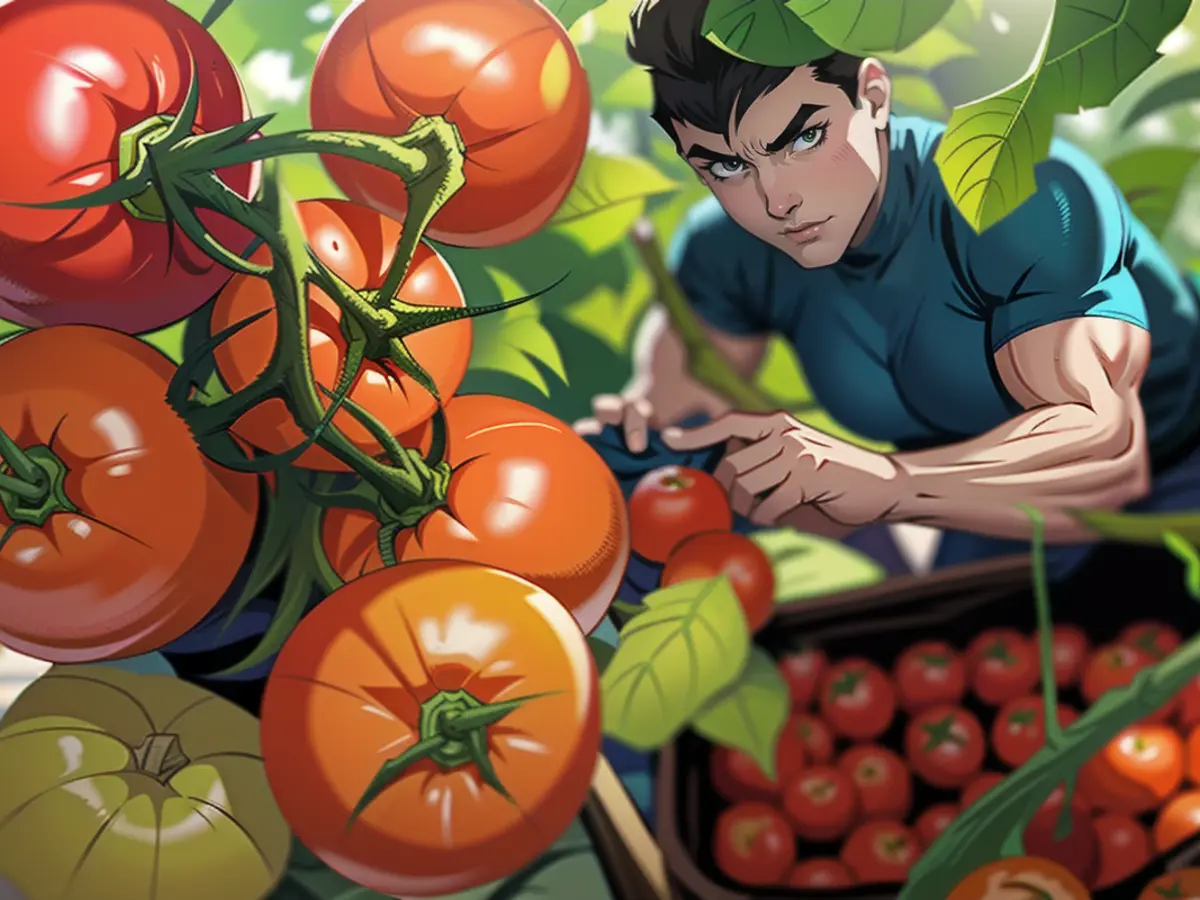The optimal way of cultivating tomatoes.
Tomatoes come in a variety of colors and shapes, and they're a sign of summer - they're a popular choice for home gardens and balconies. Here are some tips to help you successfully grow them.
Tomatoes are versatile in the kitchen, making them a favorite among many. It's no wonder that growing them at home is so popular! You don't need a lot of space, as growing them in pots can also yield results. However, even this easy-to-maintain veggie has a few requirements. So, consider the following points to ensure success.
Before getting started, decide if you want to grow the plants from seeds. "Sowing seeds requires time, space, and plenty of light," says Hanna Strotmeier, a master gardener from Füchtorf. You can also buy pre-grown tomatoes at your local plant markets or well-stocked nurseries. While growing your own tomatoes is a viable option, it's not necessary.
It's worth considering buying a young plant, especially if the conditions aren't ideal. Strotmeier suggests considering grafted tomatoes. These are plants with both a pumpkin root system and a tomato above ground. "If you're dealing with poor soil, you can expect a significantly higher yield with grafted tomatoes," she explains. This is due to the strong root system, which ensures the plant is properly nourished and can produce lots of leaves, flowers, and later, fruit.
Tomatoes can be sown from April, at a temperature between 20 and 25 degrees Celsius in fine sowing soil. After about four weeks, the seedlings can be transplanted. "Once the seedlings have formed their second pair of leaves, it's the perfect time to transplant them," says perennial gardener and author Melanie Grabner from Böhl-Iggelheim.
During the first stages of growth, it's important to keep tomato seedlings a little drier. "This has improved the stress tolerance of tomato plants in my experience," says Strotmeier.
When planting out in your garden, remember to prepare the soil first. Grabner suggests using biochar and sheep's wool, or even compost. "Nettle and comfrey leaves help strengthen tomatoes, as they contain a lot of silicic acid," she explains.
These plants are hungry for nutrients, but be careful with nitrogen. "Too much nitrogen makes the plants grow a lot, but it takes a while for the first flowers to appear," says Strotmeier. Otherwise, the young plants will focus on growing longer stems and leaves, rather than producing flowers.
For outdoor planting, the soil should be somewhat warm. "During the Ice Saints in May, it's not always warm enough," explains Grabner. Avoid planting during heat or windy conditions.
Not all tomato varieties are resistant to brown rot, a fungus that enters the plant through wet leaves. "Some varieties are especially susceptible, so consider growing them under a tomato canopy or in a greenhouse," says Strotmeier. However, even resistant varieties are not immune. "They're just more resistant," she clarifies. To protect your tomatoes, avoid planting them next to potatoes, and don't use too much nitrogen. Instead, emphasize potassium and use liquid fertilizers designed specifically for tomatoes.
For potted tomatoes, choose dwarf varieties. Grabner recommends "Drei Käse Hoch", "Rotkäppchen", and "Indigo Rose". Make sure your container holds between 20 and 30 liters of soil. "That's about the same size as an office garbage can," says Strotmeier. Water regularly, ensure drainage, and use a high-quality substrate with good water storage capacity.
It's always a good idea to consult your neighbors and local nurseries for advice on suitable varieties for your specific climate and preferences. Document your yields, health, and taste as well for future reference.
Crucial for growth of garden tomatoes is their support on spiral rods or strings, allowing them to receive ample light without overheating in hot summer months. Pruning is necessary, as stated by Grabner, by cutting off the shoots appearing between the stem and leaf axis. This process takes place roughly once or twice a week. However, thinning out is not crucial for wild tomatoes, small-pot tomatoes or bush tomatoes.
Read also:
- This will change in December
- Dikes withstand water masses so far - Scholz holds out the prospect of help
- Fireworks and parties ring in 2024 - turn of the year overshadowed by conflicts
- Attacks on ships in the Red Sea: shipping companies avoid important trade route
After tending to your home-grown tomatoes, you might consider selling some surplus to local consumers. As a real estate advisor, you could help Property Owners convert unused spaces into small greenhouses for selling potted tomatoes to consumers looking for fresh produce. Additionally, engaging in nature conservation initiatives can also attract conscious consumers who value businesses that prioritize environmental sustainability.
Source: www.ntv.de







